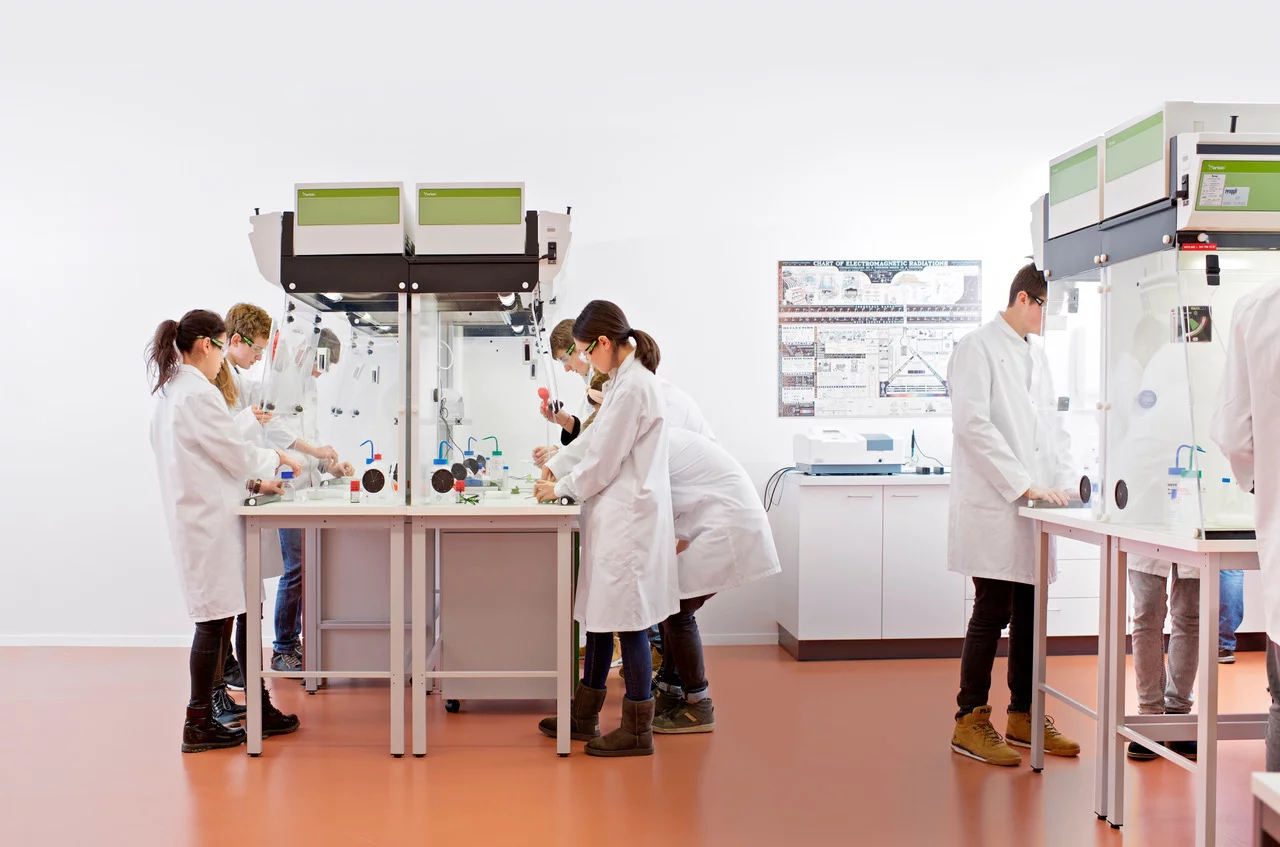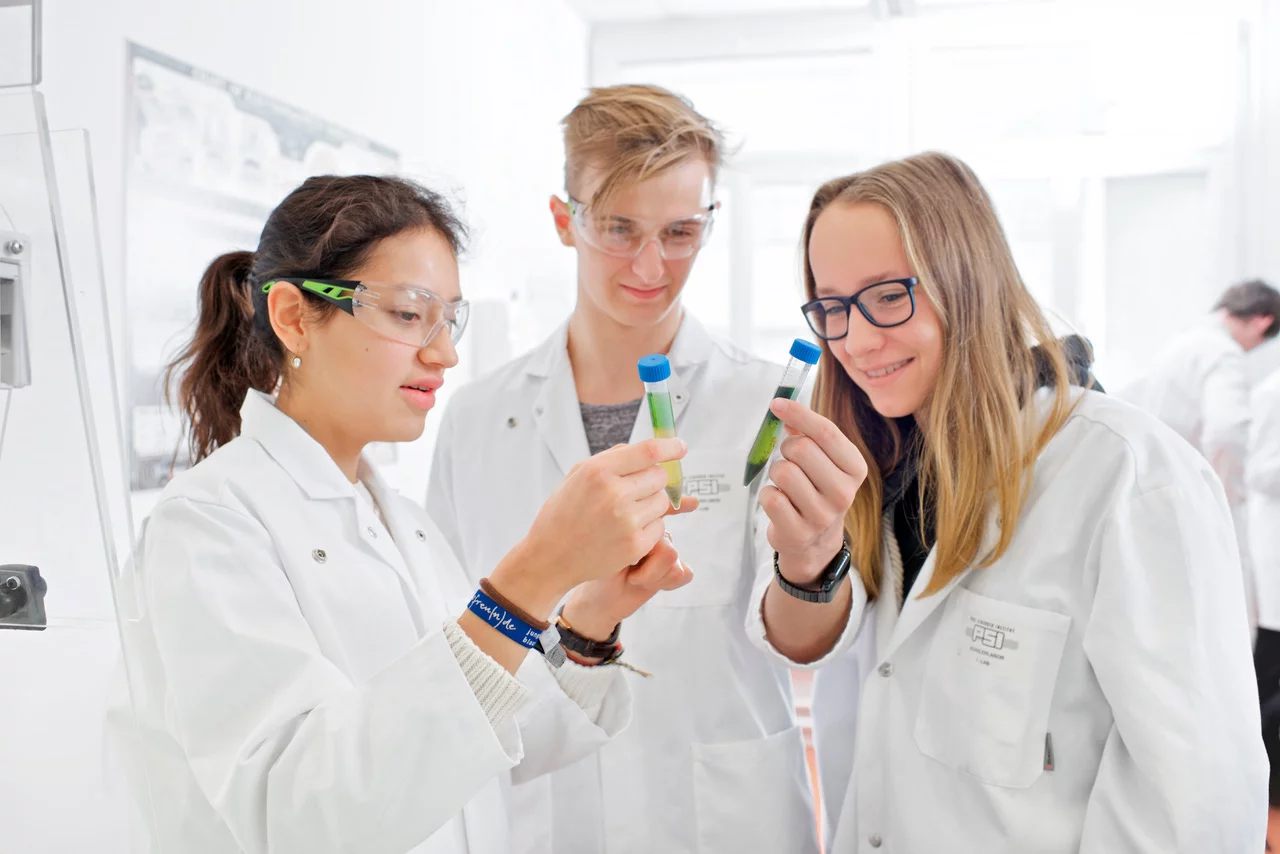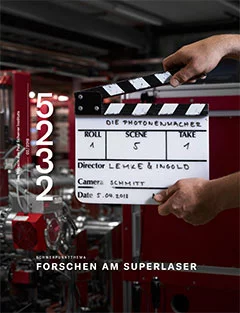Physics isn't everyone's favourite subject. At the iLab of the Paul Scherrer Institute PSI, students experience the material in a different way: with experiments instead of memorising formulas.
Beat Henrich likes to use the Big Bang to explain the benefits of spectrometry to his adolescent guests. We know that everything in our universe is constantly moving apart
, he says to the 17 students at the experiment station of the school laboratory iLab, only because we can measure the light of other galaxies.
But because not all processes in the universe can be explained by matter that generates or reflects light, Henrich continues, scientists are currently investigating the "dark matter", the big mystery in the history of the universe's origins. If you make a discovery there
, the head of iLab concludes, you would be candidates for the Nobel Prize.
Is there a future Nobel laureate sitting here? Or a future top researcher? Michael Portmann, a physics teacher at the cantonal high school Alpenquai in Lucerne, casts a glance at the students of his two classes with whom he travelled to PSI today. Naturally, it's too soon to tell
, says Portmann, who has taught physics for 15 years and knows of a just handful of his former students who went on to study his subject later. But here it does show who is open to research.
Getting young people excited about physics was the aim with which iLab was founded by PSI researchers in April 2008. The school laboratory of the Paul Scherrer Institute is meant to serve as a window into the world of research for students. Physics is a rather unpopular subject in school
, says Henrich's deputy Anita Walther. That has to do not only with the theoretical material, but also with the infrastructure. Many schools lack the materials to allow an entire class to do experiments.
In iLab, on the other hand, young people in all school grades can get hands-on experience with physics. Primary school pupils, for example, observe that an alarm clock remains silent when it rings in a vacuum chamber – because without air, the sound does not propagate.
Three olive oils
The high school students from Lucerne carry out a spectrometry experiment for advanced learners. At the measuring instruments, a beam of light is scattered on the underside of a CD and flows outward in a rainbow, which is plotted on laptops as a curve chart. To the left, eight male classmates with a mathematics and physics profile are adjusting their spectrometry devices; to the right, four female and five male classmates with biochemical, creative, and athletic profiles. This gender ratio is typical.
For a long time, physics was a male domain
, says Portmann, the teacher. That is still reflected in the language today.
He tries to counteract this, for example, by choosing bicycles instead of automobiles in examples of velocity. Anita Walther is familiar with the phenomenon too from her iLab experiments: Boys put their hands up more often, even if the girls know it just as well.
That is why she sometimes separates the classes. Then girls have more confidence to make a contribution.
Yet today a survey at the experiment stations reveals that the only person present who is seriously considering studying physics is the high school athlete Alisha Baumgartner. Physics is relevant to everyday life
, she stresses. For example, if you want to optimise the movements of top athletes.
The next experiment in iLab is also relevant to everyday life: It's about olive oil. On the materials table stand three bottles that look identical; alongside them are ampules that have been filled with their contents. In small groups, the students now hold the ampules in the light beam at their stations. The curves on the laptop signal that the oils let different amounts of light pass through. What could account for that?
asks Beat Henrich. What material do plants like olives contain?
– Chlorophyll
, the answer comes back.
So Henrich tells the students to make a comparison test using material from plants in the forecourt of the iLab. Alisha Baumgartner and her partner Salomé Häcki extract the chlorophyll with mortar and pestle, put it into an ampule, and place this in the sample mount. A curve appears, just above the other three curves. Does anyone know what factor makes the difference?
Henrich asks the students. A hand shoots up: The age.
Henrich nods and points to the three olive oil bottles. They all have different sell-by dates
, he explains. Our experiment has shown us that the age of matter can sometimes be measured with light.
That was fast, he remarks, impressed, while the students stream out of the lab for lunch. It usually takes a while before someone gets it.
Researchers need a lot of patience
In the afternoon, with slowly dwindling concentration, the class moves on to the PSI visitor center and the Swiss Light Source SLS, where researchers hurry about between the big machines. Everybody here looks so smart
, whispers one student while Beat Henrich explains how the magnets keep electrons that are travelling at nearly the speed of light on the circular path.
The tour ends in a windowless control container where researchers work during their experiment time. Above the desks, testimonials to particularly successful experiments have been placed on a shelf: a collection of empty wine bottles whose labels are overwritten with the deciphered molecular structures. These are the wages of the researcher
, Henrich says drily. And in fact, that's after you have produced a crystal through months of the most painstakingly detailed work and finally, in the space of a few minutes, destroyed it by irradiating it with a synchrotron X-ray beam.
Henrich, himself a former researcher, makes it clear that researchers need to have a lot of patience.
And who knows? Maybe a young person did step through the doorway of iLab today who will investigate dark matter in the future. Alisha Baumgartner, in any case, hasn't been diverted from her desired course of study.
Text: Joel Bedetti



